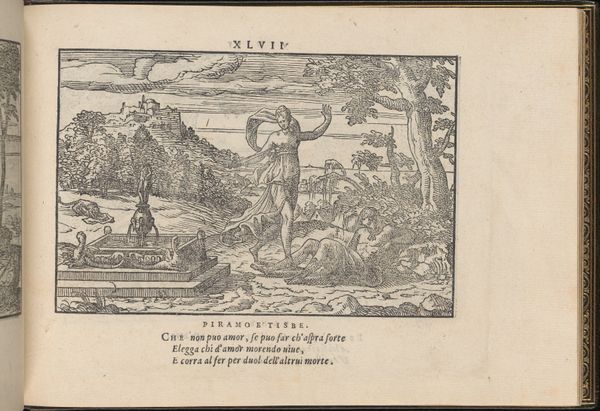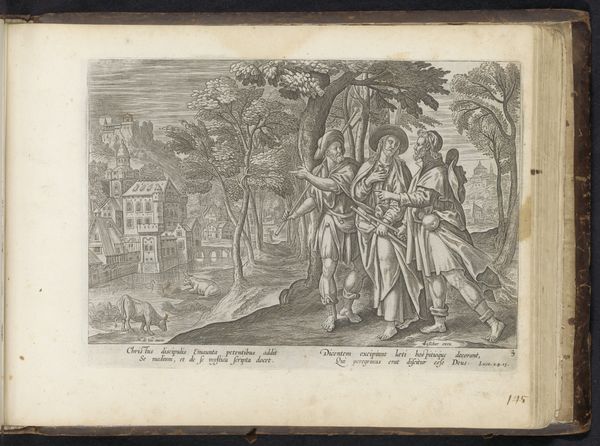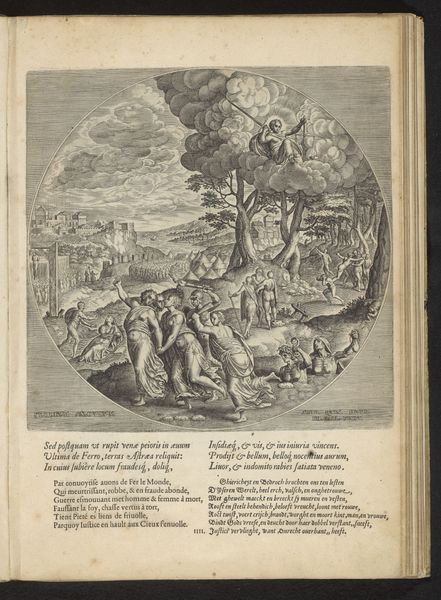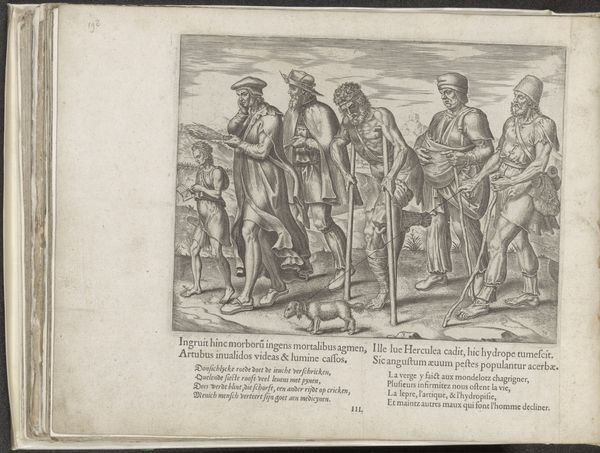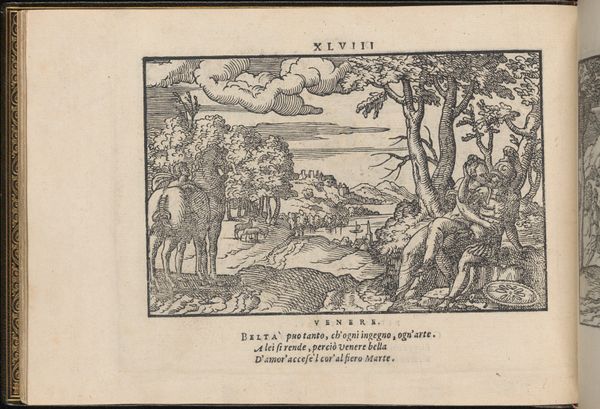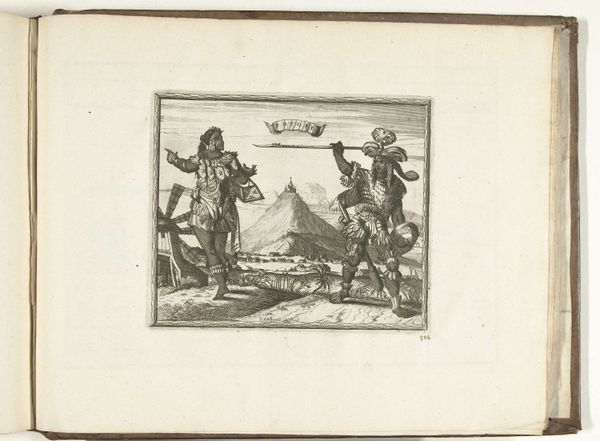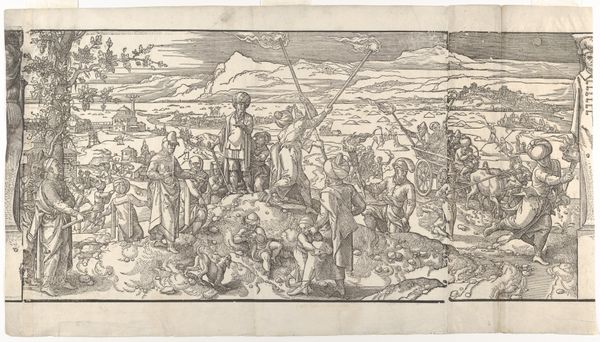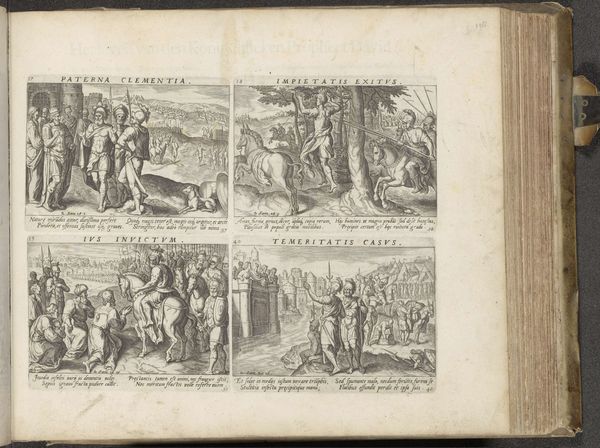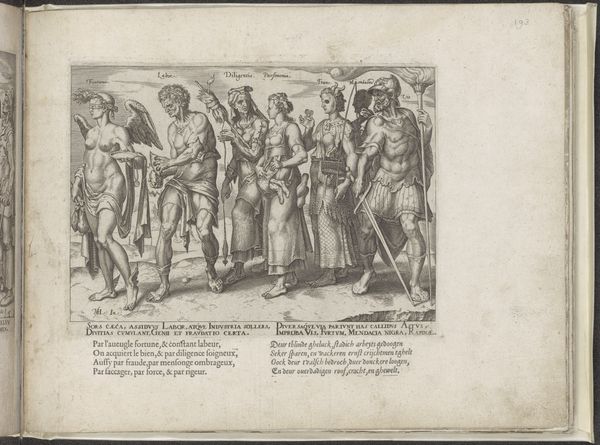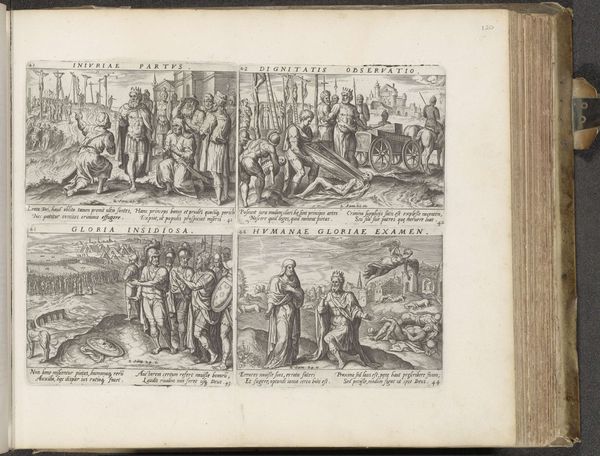
La Vera Perfettione del Disegno di varie sorti di recami, page 23 (verso) 1567
0:00
0:00
drawing, print, engraving
#
drawing
#
allegory
# print
#
figuration
#
female-nude
#
history-painting
#
italian-renaissance
#
nude
#
engraving
Dimensions: Overall: 6 5/16 x 8 7/16 in. (16 x 21.5 cm)
Copyright: Public Domain
Editor: Here we have Giovanni Ostaus's engraving from 1567, titled "La Vera Perfettione del Disegno di varie sorte di recami, page 23 (verso)." The detail is quite amazing. It almost feels like a stage play frozen in time, a story unfolding, yet static. What jumps out to you when you look at this image? Curator: The Judgment of Paris, presented within the visual vocabulary of the Renaissance, certainly strikes a chord. What truly resonates with me is how Ostaus encapsulates a profound cultural anxiety around beauty, power, and desire. Consider how Paris, rendered almost as an outsider with his garb, is poised to choose amongst these goddesses. Their nudity is not merely aesthetic; it signifies vulnerability and a raw offering of their essence. Do you notice Cupid at his feet? Editor: Yes, almost like a guilty conscience. It feels significant that Paris is clothed, while the goddesses aren’t. He holds power and agency in that choice. Curator: Precisely! And this reflects a common Renaissance trope. Clothing denoted status and civilization. By undressing the goddesses, Ostaus strips them of their societal power, reducing them to their essential attributes as perceived by the male gaze. That gaze, then, carries centuries of weight – the objectification and idealization of the feminine. The mountain in the backdrop looms, representing the immovability of fate. What consequences await Paris based on this momentous choice? Editor: That’s a great point. The mountain is not necessarily “pretty” but immovable, towering over the narrative as a consequence of his actions. It makes you wonder about the concept of ‘perfection’ as laid out in the title, when Paris can only make an imperfect, and consequential, judgment. Thank you, that has really shed new light on the symbolism within the piece. Curator: It reveals how even seemingly straightforward historical scenes hold layers of complex societal commentaries, continuing to spark discussion.
Comments
No comments
Be the first to comment and join the conversation on the ultimate creative platform.


